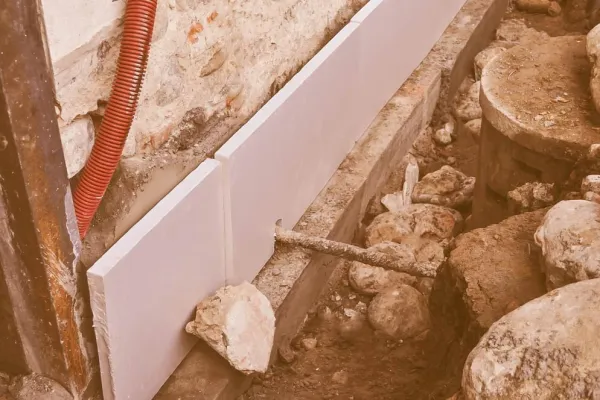Security is the main goal of any homeowner – especially if you live with other family members.
In cases of subsidence, underpinning is sometimes necessary to make this happen.
It will cost you money, but it’s a great way to secure your house’s foundations.
In this blog, we look at how much underpinning costs and other questions about this process.
What is underpinning?
Underpinning is when the foundations of a building are strengthened. It is done to make the property structure more stable and secure.
It involves strengthening the soil beneath a property and installing a reinforced concrete beam.
Underpinning is done on properties experiencing any of these scenarios:
- The foundation is no longer strong enough
- How the structure is used has changed
- The structure of the soil has changed
- Flooding, drought or an earthquake have caused earth to move.
Most of these issues cause subsidence, which is when a property becomes unstable because the ground underneath it sinks.
Different types of underpinning
You can pay for various types of underpinning. Which one is best depends on the situation.
Mass concrete pour
Mass concrete pour involves digging box-shaped cavities underneath the foundations.
These are then filled with concrete. Soil strengthening is another common method, which is when you inject grouting into the earth.
Beam and base
A beam and base solution involves replacing the current footing with a reinforced beam. And you can even install screw piles and brackets to support the foundation.
Speak to an expert who can inspect your house and recommend the best solution.
Signs that your house needs underpinning
Your house may need underpinning if it has subsidence. There are several signs indicating that this is the case.
Each one of these does not necessarily mean you need underpinning. But if several appear simultaneously, you should get an expert in for guidance.
A few common signs that you need underpinning include:
- Cracks in walls
- Sinking or sloping floors
- Doors or windows that don’t close correctly
- Bulges in your wallpaper
- A tilting chimney
- Gaps between walls and ceilings.
You’ll need to save up to pay for underpinning. It’s not an inexpensive process, but it can be extremely valuable in the long run.
Not only does it keep you safe, but it will also be beneficial for your house’s value. Read more on the costs of underpinning below.
How much does underpinning cost?
You will typically be charged for underpinning by the square metre. The larger the area that you need underpinned, the more you will pay for the service.
You’ll also pay more if your property is on a slope, because this makes the task more complex.
According to Checkatrade, the average price for underpinning varies by method. This is as follows:
- Mass concrete: £1,500 per metre squared
- Beam and base: £2,000 per metre squared
- Piling: £2,600 per metre squared.
Since you often need several square metres to be underpinned, MyJobQuote.co.uk estimates that the average cost of underpinning a house is between £6,000 and £21,000.
Keep in mind that each company and region might have its own price per square foot.
For example, costs tend to be higher in the South-East of England than in rural Wales.
How long does underpinning take?
Most experts suggest it takes 4 to 6 weeks to underpin a house.
For the smaller jobs, you may find a company that can complete it in 2 weeks.
But you should always be thorough when researching the business you’re using. After all, a fast turnaround time is poitnless if the service provider cuts corners.
Simpler underpinning tasks usually involve fewer square footage. The house won’t be on a slope, and a mass concrete pour method will be used. In this scenario, a 2-week turnaround might be possible.
Do I need to move out the house while underpinning occurs?
In most cases, you can continue living in your house while underpinning occurs. Most foundation issues are fixed from the outside.
There are rare instances where you will be asked to move out. This is usually when the company needs to do work inside the house. Installing a slab pier is a common example.
How does underpinning impact property value
You will struggle to sell a house with subsidence on the open market.
Most buyers don’t want to live in an unsafe building. And banks won’t offer a mortgage on it.
Your only option may thus be to pay for underpinning, if this is your chosen method of selling.
A house with underpinning is far more valuable than a house with subsidence. You will likely be able to get a mortgage on the property again.
However, a history of underpinning will still impact your house value. Homeowners may be nervous that foundation issues will crop up again.
Most experts suggest that underpinning reduces a property value by 20% or 25%.
Nevertheless, you should be completely transparent with potential buyers about any work done. Hiding that you’ve paid for underpinning will often result in legal action against you.
















